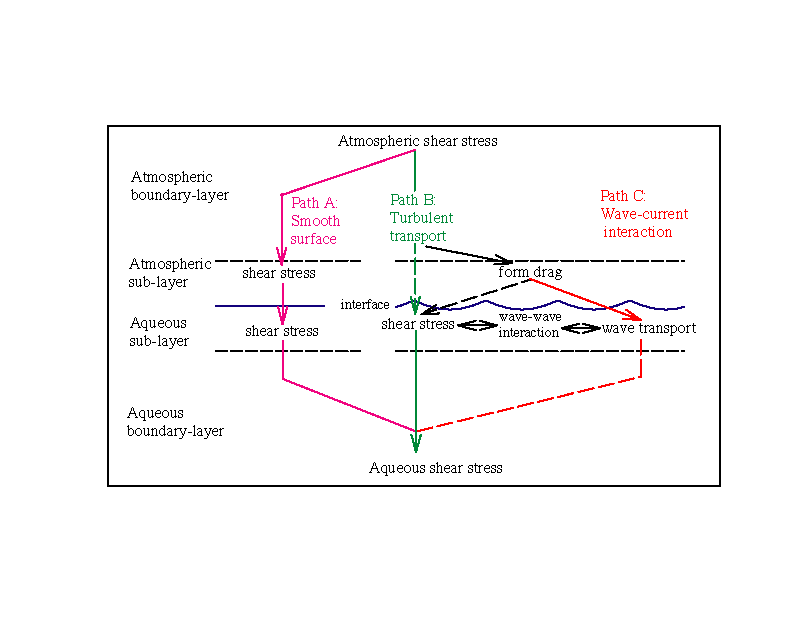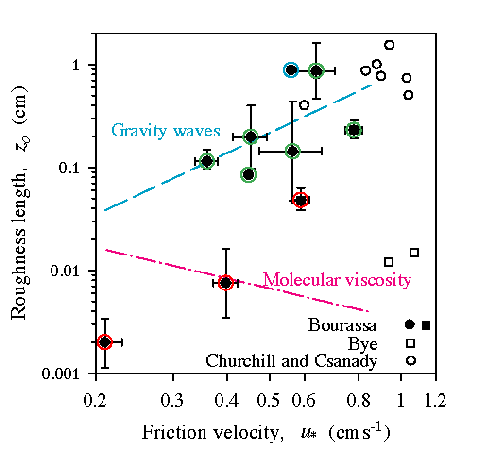Dr. Mark A. Bourassa, COAPS/FSU, Tallahassee FL 32306-2840
email: bourassa@coaps.fsu.edu
WWW: http://coaps.fsu.edu/~bourassa
The dominant mechanism for the vertical
transport of horizontal momentum, in the uppermost 2 m of wave disturbed surfaces, is examined and current profiles are modeled.
The actual mechanism cannot be determined from this analysis; however, the stress and flow profile are shown be to characteristic of gravity waves.
The stress in the aqueous boundary-layer
follows a Charnock-type relation (which is characteristic of gravity waves),
with Charnock's 'constant' (for local equilibrium) equal to 850.
Charnock's 'constant' is dependent on sea state, with smaller values for rising seas, and larger values for falling seas.
The stress partition (the ratio of aqueous
stress to atmospheric stress) is found to be near 20% for local
equilibrium conditions. The stress partition is larger for falling
seas, and it is smaller for growing seas.

Three general mechanisms for transferring momentum are shown. For wave-perturbed surfaces, dashed paths indicate relatively small importance. The mechanism for momentum transport in the aqueous boundary-layer is not clearly identified, and could be due to vertical shear or wave related transport.

The relationship between the log
of the roughness length and the log of the friction velocity indicates
the source of the mixing. Mixing related to molecular
viscosity has a slope of -1, capillary wave related turbulence
has a slope of -2, and gravity wave related turbulence has a slope
of 2. Friction velocities and roughness lengths determined by
Churchill and Csanady (1983) and Bye (1965) are
shown (open symbols), as well as new values determined using the
same observations (closed symbols). The main improvements in
the new calculations are the consideration of displacement height,
and restriction that only observations from the regime governed
by the physics in question be used in the calculation of zo
and u*.
Observations with rising seas are circled in red, near local-equilibrium
seas in green, and falling seas in blue.

Last Updated April 15, 1997

